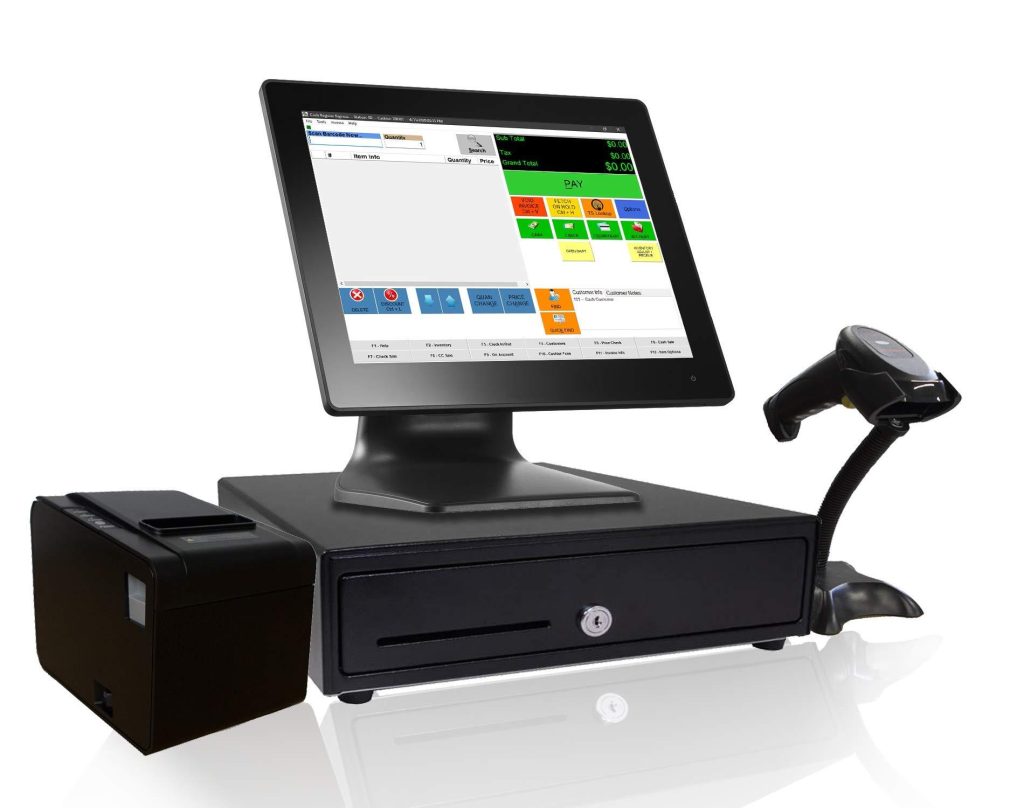The world of web design is evolving rapidly, with Artificial Intelligence (AI) at the forefront of this transformation. Gone are the days when website creation was purely a manual task; AI is now revolutionizing how websites are built, optimized, and maintained. With AI-driven automation, businesses, startups, and tech innovators can create more user-friendly (UX), visually appealing (UI), and efficient websites without deep coding expertise.
For business owners and startups, AI offers cost-effective, scalable solutions that simplify the process of building and managing an online presence. Tech enthusiasts and AI researchers are exploring how machine learning, neural networks, and predictive algorithms contribute to advanced features like personalized UX, automated content generation, and adaptive UI layouts.
This blog delves into how AI is reshaping web design, covering its evolution, benefits, applications, and future impact. Whether you’re a startup founder, digital entrepreneur, or AI enthusiast, understanding AI’s role in web development and design will help you stay ahead in the digital landscape.
Notably, a recent survey found that 49% of web designers use AI to experiment with new design approaches, highlighting the growing integration of AI in the industry.
The Evolution of Web Design
Web design has come a long way from the early days of static HTML pages to today’s dynamic, AI-powered experiences. Initially, website development required extensive manual coding, with web designers relying on basic HTML and CSS to structure and style pages. Over time, content management systems (CMS) like WordPress and drag-and-drop website builders made web designing more accessible to non-developers.
As user expectations grew, responsive design, UI/UX principles, and interactive elements became essential. This led to a demand for faster, smarter, and more adaptive solutions, paving the way for AI integration in website design.
AI’s Entry into Web Design
The introduction of Artificial Design Intelligence (ADI) systems marked a major shift in how websites are created. Platforms utilizing ADI analyze user behavior, industry trends, and visual design principles to generate custom layouts, typography, and content structures automatically.
AI-driven tools now assist in:
- Automating repetitive design tasks, allows designers to focus on creativity.
- Personalizing user experiences (UX) through data-driven insights.
- Optimizing website layouts and navigation for better engagement.
- Enhancing accessibility, ensuring websites cater to diverse users.
With AI continuously improving, web design is becoming more intuitive, efficient, and data-driven. Businesses and startups leveraging these advancements can build highly engaging, visually appealing, and user-friendly websites with minimal effort.
Benefits of AI in Web Design
The integration of AI in web development is reshaping website design by making it more efficient, intelligent, and adaptive. AI-driven innovations allow businesses, startups, and researchers to create user-friendly (UX) and visually engaging (UI) websites with minimal effort. From automating repetitive tasks to enhancing security, SEO, and accessibility, AI is optimizing every aspect of web design.
Below are top 10 key benefits of AI-driven website design:
Faster Website Development with Automation
Traditional web designing requires significant time for layout structuring, coding, and content placement. AI-powered website builders such as Wix ADI and other AI design tools analyze inputs and automatically generate optimized websites within minutes. This automation drastically reduces development time, enabling businesses to launch websites faster.
Example: A startup needing a landing page can use AI-driven design tools to generate a fully functional page without manual coding, reducing development time from weeks to hours.
Enhanced User Experience Through Personalization
AI-driven UX enhancements focus on delivering highly personalized experiences based on user behavior. AI analyzes visitor interactions, including clicks, browsing history, and preferences, to dynamically adjust content, layout, and navigation.
Key benefits
- AI suggests personalized content (e.g., recommended products, blog suggestions).
- Adjusts UI elements in real-time for individual users.
- Enhances conversion rates by creating tailored customer journeys.
AI-Driven Design Recommendations for Better Aesthetics
Website designing requires a keen eye for aesthetics. AI leverages machine learning algorithms to analyze global web design trends and suggest layouts, color palettes, typography, and spacing to enhance UI/UX design.
What AI improves
- Color and font selection based on brand identity.
- Layout recommendations for improved readability and engagement.
- Smart image placement for a visually appealing look.
Example: AI tools like Canva’s design suggestions use AI to refine visual design elements automatically.
Cost-Effective Solutions for Startups and Small Businesses
For startups and small businesses, hiring a web design team can be expensive. AI reduces development costs by eliminating the need for extensive manual work, allowing small businesses to create professional website designs without hiring developers.
Cost-saving areas
- AI-based website builders eliminate manual design efforts.
- AI chatbots reduce the need for customer support agents.
- AI-powered SEO tools optimize content automatically.
Smart Content Creation and Dynamic Updates
AI enhances content strategy by analyzing search trends, user intent, and engagement metrics to generate and optimize content. Top AI content writing tools like ChatGPT, Jasper, and Copy.ai help in crafting SEO-friendly, engaging web content.
AI-driven content benefits
- Automates headline optimization for better click-through rates.
- Generates personalized blog recommendations for visitors.
- Updates website content based on industry trends.
Example: AI detects seasonal trends and updates homepage content accordingly.
Improved Website Accessibility for Diverse Users
AI ensures web accessibility by automatically adjusting text size, color contrast, and voice navigation for users with disabilities. AI-powered tools help ensure compliance with WCAG (Web Content Accessibility Guidelines).
Key accessibility features
- Voice-assisted browsing (AI-powered screen readers).
- Automatic captioning and text-to-speech features.
- AI-driven real-time language translation.
Example: AI in Google’s accessibility tools improves website usability for visually impaired users.
AI-Powered A/B Testing for Performance Optimization
A/B testing traditionally requires manual data analysis to determine which website version performs better. AI automates A/B testing by continuously analyzing visitor interactions and recommending the best-performing design elements.
AI optimizations include
- AI-driven call-to-action (CTA) placement for higher conversions.
- Adjusting layout structure based on heatmap analysis.
- Real-time modifications based on visitor behavior analytics.
Example: AI-based A/B testing tools like Google Optimize analyze multiple versions of a landing page and pick the highest-converting one.
Enhanced Security Through AI-Driven Threat Detection
Websites are vulnerable to cyberattacks, malware, and data breaches. AI-powered cybersecurity solutions detect suspicious activities, block potential threats, and prevent unauthorized access in real-time.
AI security benefits
- Monitors for DDoS attacks and unusual login attempts.
- AI-driven fraud detection for eCommerce sites.
- Automated malware scans and security patches.
Example: AI-driven firewalls help prevent unauthorized intrusions on high-traffic business websites.
Automated SEO Improvements for Better Visibility
AI helps websites rank higher on search engines by automating SEO audits, keyword optimization, and content structuring. AI-powered SEO tools scan pages to improve meta descriptions, alt tags, and site speed.
AI-driven SEO improvements
- AI suggests optimized headings and keywords.
- AI improves internal linking for better navigation.
- AI identifies duplicate content and fixes issues automatically.
Example: AI-powered SEO tools like Surfer SEO analyze search engine trends and recommend content adjustments.
Voice and Chatbot Integration for Seamless Interaction
AI-powered chatbots and virtual assistants improve customer engagement by providing instant responses. Businesses use AI-driven chatbots to answer FAQs, guide visitors, and even assist with purchases.
AI-driven chatbot features
- 24/7 customer support via AI chatbots.
- Voice search optimization for hands-free navigation.
- AI-powered predictive text assistance for faster user interactions.
Example: AI chatbots like Drift and HubSpot help automate customer service interactions on websites.
AI is revolutionizing web development by automating tasks, enhancing UX, improving security, and optimizing SEO. Businesses, startups, and researchers leveraging AI-driven innovations can reduce costs, improve efficiency, and create stunning web designs effortlessly.
How is AI Used in Web Design?
AI is redefining web design by automating tasks, optimizing layouts, enhancing user experience (UX), and improving security. From AI-powered design tools to smart content generation, businesses and startups can create engaging websites with minimal effort and maximum efficiency. Below are 10 key ways AI is transforming website design:
AI-Powered Website Builders for Automated Site Creation
Traditional website building requires manual coding, design selection, and content structuring. AI-powered website builders streamline this process by analyzing business needs and automatically generating professional websites.
Key Features
- AI suggests layouts, colors, and typography based on industry trends.
- Automates content placement and image optimization.
- Uses machine learning to improve website designs over time.
Example: Wix ADI (Artificial Design Intelligence) builds websites by analyzing user preferences and branding elements.
Smart UX/UI Design Suggestions Based on User Behavior
AI tracks visitor behavior, such as scroll patterns, clicks, and navigation habits, to optimize website layouts and improve user experience (UX).
How AI Enhances UX/UI Design
- Dynamically adjusts spacing, font size, and button placements.
- Uses heatmap data to optimize page structures.
- Adapts navigation flow based on real-time user engagement.
Modern responsive web design frameworks leverage AI to dynamically adjust website layouts. By analyzing user interactions and device types, AI ensures that websites remain visually appealing and functional across desktops, tablets, and mobile devices.
Example: AI-powered UX tools like Adobe Sensei analyze visitor behavior to provide real-time UI optimization suggestions.
AI-Driven Chatbots and Virtual Assistants for Customer Support
AI chatbots enhance user interaction by providing instant responses to queries, guiding users through a website, and automating customer support.
AI chatbot capabilities
- 24/7 availability for real-time responses.
- AI-powered predictive text assistance improves user interactions.
- Voice recognition and AI-driven voice search support.
Example: Drift, ChatGPT-powered chatbots, and HubSpot’s AI assistant automate customer engagement on business websites.
Personalized Content Delivery Using AI-Powered Recommendations
AI analyzes user data, search history, and browsing patterns to provide personalized content recommendations.
Key Benefits
- Improves user engagement by displaying relevant content.
- AI-driven product recommendations increase eCommerce sales.
- Dynamically updates homepage banners based on visitor interest.
Example: Amazon and Netflix AI algorithms suggest products and shows based on user preferences.
AI-Assisted Coding for Faster Front-End and Back-End Development
AI-powered code generation tools assist developers by automating repetitive coding tasks and suggesting error-free, optimized code snippets.
How AI enhances coding
- Speeds up HTML, CSS, and JavaScript development.
- Auto-generates responsive designs with adaptive elements.
- Detects and fixes coding errors instantly.
Example: GitHub Copilot and Tabnine help developers generate AI-powered code suggestions.
Automated Image and Video Optimization for Faster Load Speeds
AI improves website performance by optimizing images, videos, and graphics for faster loading times.
AI optimization benefits
- AI reduces image file sizes without quality loss.
- Enhances image resolution for retina displays.
- Auto-adjusts brightness, contrast, and color for better visuals.
Example: AI-powered tools like Cloudinary and TinyPNG optimize images for improved website speed.
Real-Time Data Analytics to Improve User Engagement
AI tracks website analytics, visitor interactions, and conversion rates to provide actionable insights for improving site performance.
AI-driven analytics benefits
- AI predicts user behavior trends.
- Auto-generates real-time reports on website performance.
- Suggests content updates based on engagement metrics.
Example: Google Analytics 4 (GA4) and Hotjar AI-powered tracking help businesses optimize websites based on visitor insights.
AI-Generated Typography and Color Schemes for Branding
AI analyzes branding trends, industry preferences, and audience psychology to suggest the best font styles, color palettes, and visual themes.
How AI enhances branding
- AI selects contrasting colors for better readability.
- Suggests typography combinations that align with brand identity.
- Auto-generates logo and visual elements.
Example: Looka and Design.ai create AI-driven branding elements based on business style preferences.
Predictive Design Elements That Adapt to User Preferences
AI enables dynamic web designs that adjust layouts, content, and images based on visitor preferences and past interactions.
How predictive design works
- AI detects user preferences (dark mode, font size, etc.).
- Adjusts page elements in real-time.
- Creates a customized user experience for each visitor.
Example: Spotify and YouTube AI models personalize homepage content for users based on listening and viewing habits.
AI-Enhanced Cybersecurity to Prevent Web-Based Threats
AI-powered cybersecurity solutions protect websites from phishing attacks, DDoS threats, and data breaches by detecting suspicious activity in real time.
AI security benefits
- AI detects unusual traffic spikes (potential DDoS attacks).
- Prevents spam login attempts and fraud.
- AI-generated SSL encryption secures user data.
Example: Cloudflare and Darktrace AI use machine learning to detect security threats automatically.
From AI-powered website builders to predictive UX enhancements, AI is redefining the future of web design. Businesses, startups, and researchers leveraging AI-driven web innovations can enhance user engagement, improve performance, and create high-quality websites with minimal effort.
As AI in web development continues to evolve, integrating intelligent design tools, automation, and data-driven insights will be essential for building the next generation of websites.
AI’s Continued Evolution in Web Design
AI is shaping the future of web design with continuous advancements. Businesses that integrate AI into their web development strategies will benefit from the following trends:
- AI-powered website builders will become more advanced, enabling businesses to create fully functional websites without technical expertise.
- AI-driven UX/UI personalization will dynamically adjust layouts, color schemes, and content based on user behavior.
- AI will enhance voice and gesture-based navigation, making websites more accessible and interactive.
- Generative AI will contribute to visually engaging, unique website designs tailored to user needs.
- AI in cybersecurity will continue to evolve, offering stronger protection against cyber threats and unauthorized access.
With these advancements, web designing will become more intuitive, data-driven, and user-centric.
The Balance Between AI Automation and Human Creativity
Despite AI’s growing influence, human creativity remains irreplaceable in web design. While AI enhances efficiency, performance, and user engagement, human designers contribute in areas that require:
- Brand storytelling and strategic messaging to build emotional connections.
- Custom design elements and artistic creativity that go beyond AI-generated templates.
- Problem-solving and design innovation to create unique, business-specific solutions.
The future of website design lies in combining AI’s speed and automation with human expertise and creativity. This balance will allow businesses to develop visually stunning, high-performing websites while maintaining a strong brand identity.
Conclusion
For businesses, startups, and researchers, embracing AI in web development is no longer a choice but a necessity. Those who integrate AI-driven web solutions will experience faster development, improved UX, enhanced security, and long-term scalability.
AI is evolving rapidly, and businesses that stay ahead of AI-powered web innovations will have a competitive edge. Understanding AI’s capabilities and applying them strategically will lead to more efficient, engaging, and future-proof website designs.
Many businesses are already leveraging AI-driven solutions, and some of the best web designing companies are integrating AI into their workflows to create visually stunning, high-performing websites. Partnering with an experienced web design agency that understands AI-powered design trends can help businesses build innovative and scalable websites.
The future of web design is here, and AI is at the center of it.
[ad_2]
Source link



